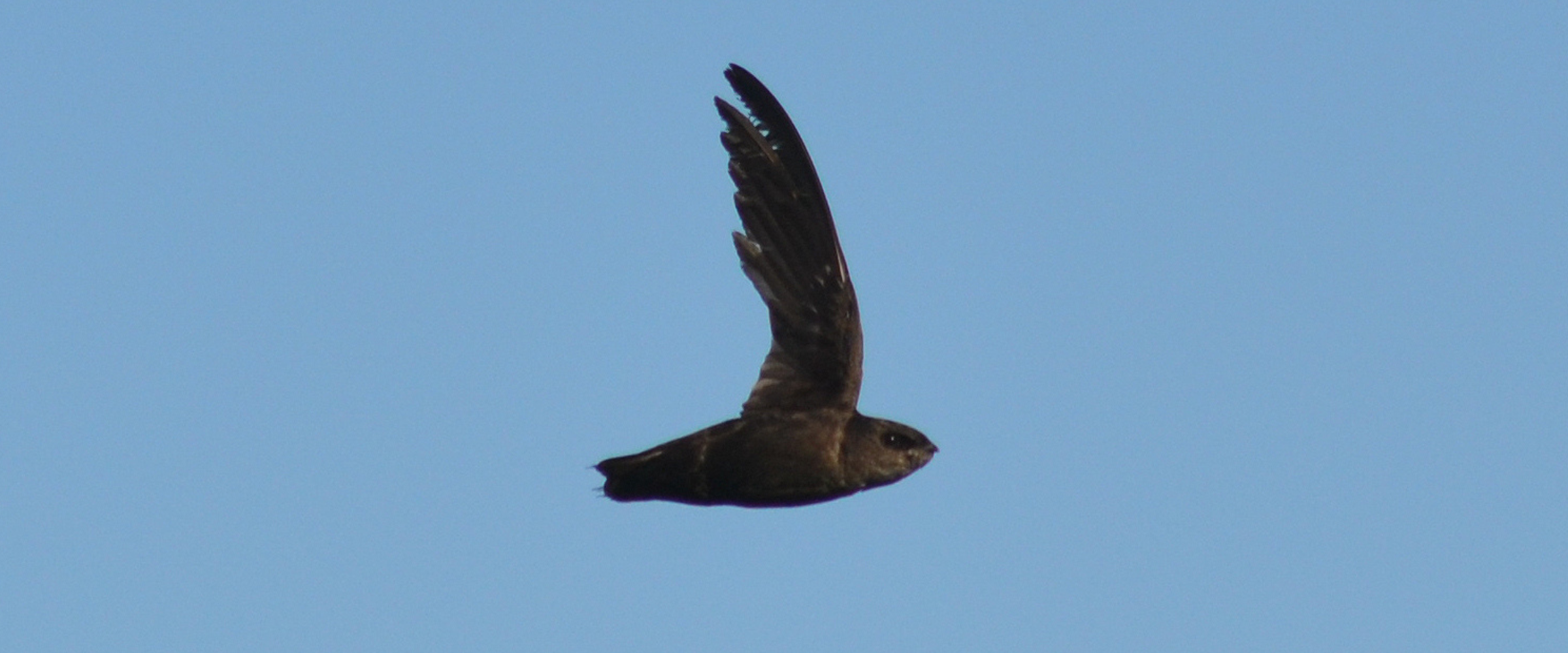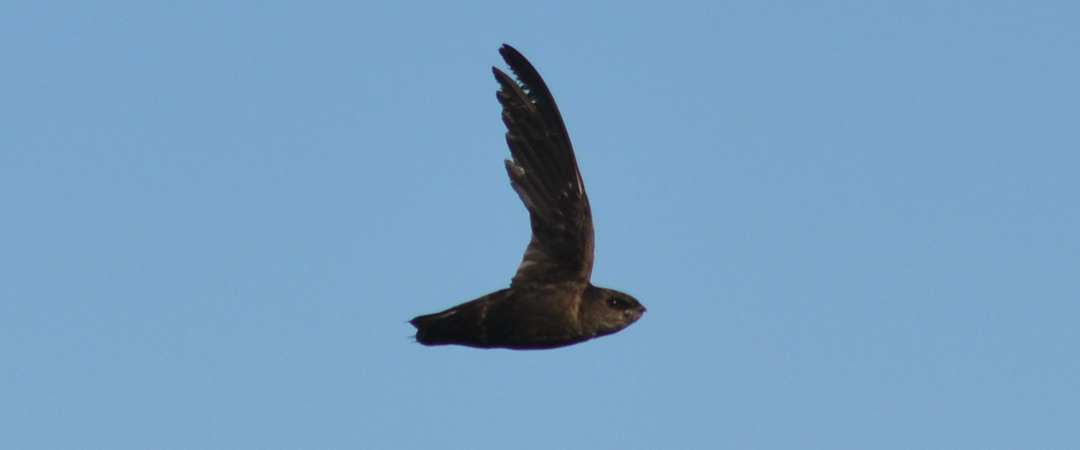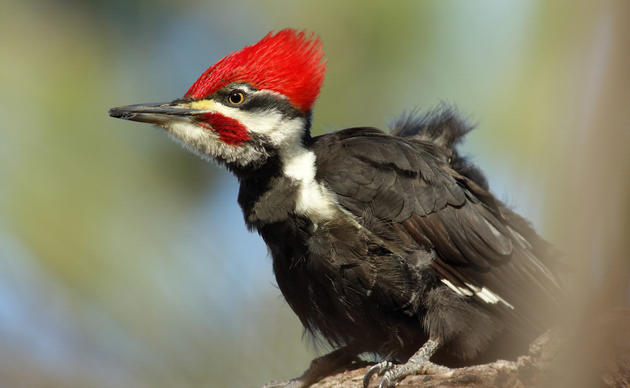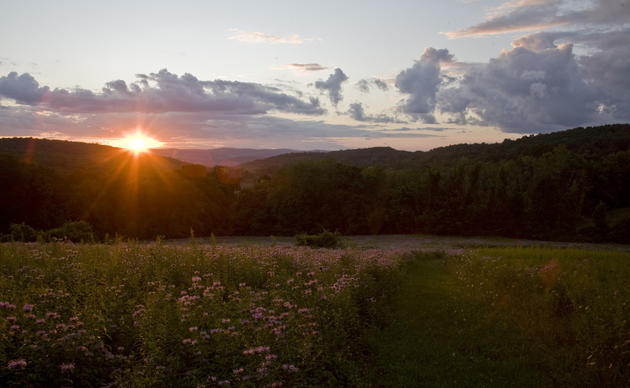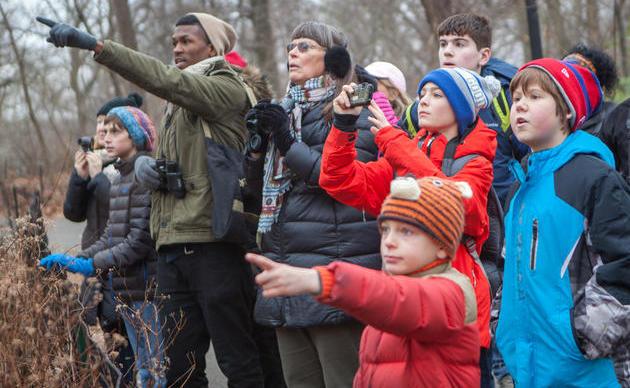Chimney Swifts (Chaetura pelagica) are our only swift species in the eastern United States. You might have seen—or heard!—them in flight, where their “bow and arrow” body shape and rapid wingbeats set them apart from other birds. You might also have met them in your chimney or fireplace!
As their name suggests, they often spend time in and around chimneys and other human structures, which they nest and roost in during the spring and summer! These mimic the shape of their more “natural” nesting sites, such as hollowed trees! Their small but strong feet are uniquely adapted to perching on walls and other flat surfaces, so much so that they're unable to stand like other birds. Any time not spent roosting is spent on the wing. Chimney Swifts leave their chimneys at dawn and stay in flight until dusk. They can eat thousands of insects each day.
Due to deforestation and human development, Chimney Swifts now depend on human structures to nest and raise their young—but even these spaces are now at risk due to people capping, lining, or no longer using chimneys. Thankfully, many individuals and organizations are working to conserve this species by making sure their chimneys are safe places for them to nest!
Have Chimney Swifts in Your Chimney?
Let us be the first to say congratulations! Not only are you helping to conserve a unique, declining species, but you've also scored some fantastic houseguests. Chimney Swifts make for great tenants, spending most of their time in flight and catching thousands of insects each day. Their tiny nests also pose no risk to your chimney, causing neither blockages nor structural damage.
Plus, as a migratory species, young and adult birds alike will be gone by early fall, flying down to spend their winters in the Amazon River Basin and leaving your chimney ready for use by the time it gets cold. Follow their migration using the Bird Migration Explorer!
Many people don’t realize they are Chimney Swift “landlords” until they find nestlings in their fireplace. This is especially common during hot, humid summers, where their nests—made of small twigs held together with their special sticky saliva—may disintegrate before the chicks are fledged.
If you find fallen Chimney Swift nestlings in your house or place of business, it is essential to get in touch with an experienced wildlife rehabilitator immediately. These experts will help evaluate the fallen chicks and create a re-nesting strategy for your specific situation.
You can contact the Sharon Audubon Center's Wildlife Rehabilitation Clinic by calling us at 860-492-0106 or emailing sunny.kellner@audubon.org. Please follow the directions provided in our voicemail and email.
To find other licensed wildlife rehabilitators near you, look to the following state agencies and resources:
- Connecticut State List of Licensed Wildlife Rehabilitators (CT DEEP)
- New York State List of Licensed Wildlife Rehabilitators (NYS DEC)
- Animal Help Now (An animal emergency professional locator website and app)
Watch this video on our Facebook page to see how a local Connecticut business followed advice from the Sharon Audubon Center’s experienced wildlife rehabilitators to renest a family of Chimney Swifts that were found in their establishment.
Chimney Swift Conservation
Chimney Swifts have experienced an estimated 67% decline in population. Like many other birds, they are vulnerable to habitat loss and pesticide use. For this reason, this vulnerable species is a conservation priority for Audubon Connecticut and New York.
Want to help?
- Be a good Chimney Swift “landlord”—find more information below!
- Construct Chimney Swift towers, or support local organizations doing that work
- Add native plants to your garden and community to support insect populations Chimney Swifts rely on to eat and feed their young
- Participate in migration roost monitoring to help scientists understand the species’ conservation needs
How to be a good Chimney Swift Landlord
- Allow swifts to utilize your chimney as critical breeding habitat
- Keep your chimney unlined and uncapped if you know that swifts use your chimney
- Or, install a cap that has open sides at least 12”, remove your chimney cap during nesting season, and replace it after fall migration
- Schedule annual chimney maintenance outside of breeding months
- Before nesting: March and early April, or,
- After fall migration: mid-late September
- Keep your damper closed during nesting season to prevent fallen swifts from going into the fireplace
- Keep your property and neighborhood pesticide free
- Plant native plants to support native insect populations, the food source of swifts
- Report your nesting swifts to your state environmental agency or local swift monitoring group
How you can help, right now
Learn & Explore
Where birds thrive, people prosper. Help us transform local communities into places where birds flourish. Learn what you can do to nurture wildlife, nature, and conservation in Connecticut.
Support Our Work
Through land stewardship, science, education, and advocacy, we work to preserve habitat and protect bird species that are of state, national, and global concern. Your gift makes a difference.
Join Our Family
When you become a member of Sharon Audubon Center, you are protecting critical woodlands and a natural heritage for generations to come. Help us do great things.

